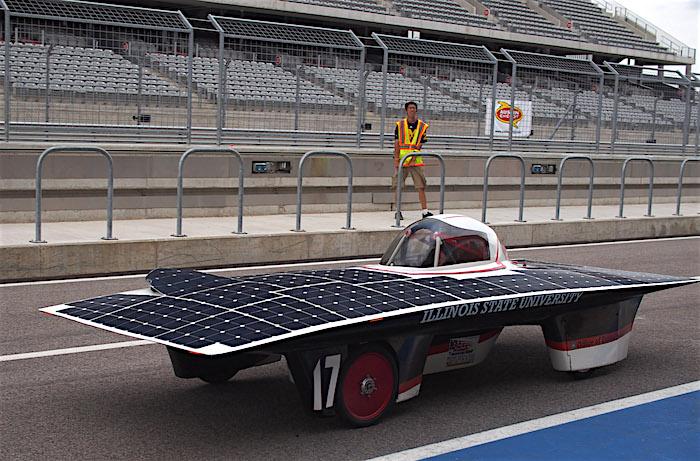
Solar-powered vehicles are traveling to national parks to showcase the possibilities of using the Sun to power vehicles/American Solar Challenge
After traveling 1,975 miles across seven states as part of the American Solar Challenge, it all ends for college teams from across the world with a checkered flag at Wind Cave National Park in South Dakota on Saturday, August 6.
More than a dozen university teams have designed and built solar-powered cars that are participating in an eight-day open road rally while stopping at nine different National Park System sites.
The American Solar Challenge cars will stop at Wind Cave on August 6 sometime between approximately 11:30 a.m. and 4 p.m. Visitors are invited to see the cars and enjoy other activities, including discovering how climate change impacts the Midwest and making sun-heated S’mores.
“We are excited to welcome the solar cars to Wind Cave,” said Wind Cave Superintendent Vidal Dávila. “Visitors will get the chance to explore spectacular park resources, see cool cars that use innovative solar technology, and learn more about National Park Service efforts to reduce our impact on the environment.”
Every two years the Innovators Educational Foundation organizes the American Solar Challenge, a collegiate student design competition to design, build, and drive solar-powered vehicles in a cross-country time/distance rally event.
“We’re looking forward to bringing the solar cars to nine national parks across the Midwest during the American Solar Challenge 2016 and celebrating the National Park Service Centennial. We hope visitors will take this opportunity to see the solar cars, meet the teams, and find their park,” said event organizer Gail Lueck.
The American Solar Challenge begins at Cuyahoga Valley National Park in Ohio on July 30. From there to Wind Cave the cars are scheduled to make stops at Dayton Aviation Heritage National Historical Park, George Rogers Clark National Historical Park, Ulysses S. Grant National Historic Site, Wilson’s Creek National Battlefield, Brown v. Board of Education National Historic Site, Homestead National Monument of America, and Scotts Bluff National Monument.
As part of the 2016 Centennial, the National Park Service has challenged itself to provide more research and education around the effects of climate change on national park resources. The Green Parks Program encourages walking, biking, ride-sharing, and use of fuel-efficient or alternative-fuel vehicles. The American Solar Challenge highlights these efforts by bringing solar-powered cars to parks.



Add comment